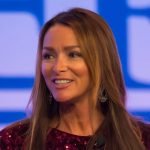May is Older Americans month. And as we age, exercise can help to counteract some of the not-so-pleasant effects of the Golden Years. I personally have found that swimming, walking, and rebounding are all fun and low-impact ways to get my blood pumping, build strength, and feel healthy in both mind and body!
What Happens When You DON’T Exercise?
I probably don’t even have to mention all the health complications that can happen when one leads a primarily sedentary life. I will mention some facts, however, because they are so important.
A 2019 report put out by the U.S. Physical Activity Council surveyed more than 10,000 individuals on their level, frequency, and type of exercise and found that Americans in general are becoming more sedentary. What’s more, those aged 65 and older showed the most increase in inactivity of any other group between 2013 and 2018.1
The trend towards inactivity absolutely has an effect on seniors and perhaps the most noticeable effect is on muscle strength and balance. A report from the U.S. Centers for Disease Control (CDC) found that lack of physical activity can weaken the musculoskeletal system. Inactivity can result in higher bone loss, lower muscle strength, and higher risk of falls in seniors.2 In fact, the risk of falls in older adults nationally appears to be increasing as inactivity does. According to the CDC, about one in every four elders will suffer a fall. Deaths from falls amongst older Americans rose by roughly 30% between 2007 and 2016.3
On the flip side, however, high levels of “recreational physical activity” can lead to reduced mortality overall amongst older individuals, according to a report put out by the National Institute on Aging.4
Swimming: Low Impact, Maximum Benefit
Older people have a greater chance of falling because of changes in reaction time, bone density, vision, and overall muscle mass. According to the latest research, perhaps no other activity can help reduce the risk of falling in older adults than swimming. Dafna Merom is an associate professor at the University of Western Sydney in Australia and the lead author of a new report on the subject.
“Unlike [with] land-based sports, swimmers are required to create their own base of support and at the same time, to produce a coordinated movement of both upper and lower extremities,” Merom said in an article for the online medical database LiveScience.5
Merom and her team looked at 1,700 men aged 70 and older. They compared the types of exercise they engaged in to their rate of falls within a four-year period. The men who swam regularly were 33% less likely to fall compared to other men in the study.
One quick tip: If you choose to do your laps in a swimming pool, be sure to choose one that uses chlorine and bromide cleaning products sparingly since these chemicals can come with their own toxic side effects.6 Even better, find a salt water pool for the safest swim possible!
Rebounding: Bounce Your Way to Health
Roughly 10 million Americans suffer from lymphedema and other lymphatic diseases, according to the Lymphatic Education and Research Network (LERN). Many of these are older Americans who have gone through treatment for breast, ovarian, or prostate cancer.7 For these individuals and many others, rebounding can really help.
The only way that lymph fluid can circulate through the body is with movement. Exercise, especially rebounding, encourages the muscular contractions which move lymph fluid throughout the system. Rebounding can be done for strength training or as a great aerobic workout. It can get your heart pumping, help with balance, and tone & strengthen muscles.
According to experts, rebounding is actually better for individuals with hip or knee issues. Rebounding expends the same amount of energy as walking but does not put as much stain on the joints. A 1980 research study conducted by the University of Kentucky in partnership with NASA had as its aim to find the best exercise for astronauts returning to Earth from space. For returning astronauts, building back muscle mass is key.8
Rebounding was found to be the best choice by far since it encourages a greater level of oxygen uptake than a treadmill while at the same time requiring less effort. Rebounding also allows a person to have a longer workout without feeling fatigued.
Another report published in the Archives of Gerontology and Geriatrics found that exercise with a mini-trampoline helped elderly women “significantly” with balance.9 This is in part because rebounding helps people learn how to shift their weight in the correct way as well as be aware of body position and balance.
Walk Your Way to Peace of Mind
Finally, there is walking. It is the form of physical movement that we all learned first and is the one that we use every single day (even if it is just to go from the kitchen to the living room!). There are many studies as to its health benefits. It is cheap, easy, and anyone who is able-bodied can do it.
Its simplicity is why I mention it on my list here. Although I don’t recommend walking as your only form of exercise, I do encourage you to walk – outside if possible – a little bit every day!
Why? For one thing, through walking you will be practicing the strength-building and balancing skills needed along with the other forms of exercise mentioned in this article. But there is another reason… A fast-paced walk amongst the trees can settle your mind as well as your body. According to a 2012 Korean study, walking in a natural area helped alleviate depression, anxiety, anger, fatigue, and confusion while walking in an urban area had the opposite effect.10
This month we celebrate the wisdom and joy of older Americans. If you are in your Golden Years, then celebrate yourself and your miraculous body. Treat yourself to a swim, rebounding session, or walk in nature every single day!
Article Summary
Americans in general are becoming more sedentary.
The most noticeable effect of inactivity is on muscle strength and balance.
Swimming can greatly reduce the risk of falling in older adults.
Rebounding can have a great effect on lymphedema and other lymphatic diseases by circulating lymph fluid through the body.
Walking builds strength and balancing skills.



















I used to rebound but after a hip replacement and several herniated disks, it is the worst thing for me. Gives me crippling pain. My husband has had knee replacement and Dr said running and rebounding were the two things he should not do! You should let people know if they have hip or knee replacements this is not recommended!
Hi Ty and Charlene Aerobic exercises are the best form of exercise and your choice of exercises for the elderly covers all three. Can I add cycling to that list Love and Blessings,
PS Preferably in the countryside or seaside away from carbon monoxide fumes
On another matter: What do you know about the “Ultra Sound – aim at Brain” treatment for Diabetes?
For body mind and spirit exercises that treat the whole person. and for the older generation who suffer from variable forms of incapacity due to life’s wear and tear on their physical and mental health Qigong is a gentle form of exercises for supple limbs and serene mind. Meditation and movement in one. Practiced by the Chinese for over four thousand years anyone from nine to ninety nine can do it
My father who is elderly aged 81 stopped exercising for several years and he became completely out of shape. He had a problem with his valve in his heart and he needed a replacement and he suffered a severe case of depression. Do you think that his physical and mental problems might had been caused because he stopped doing physical activity?